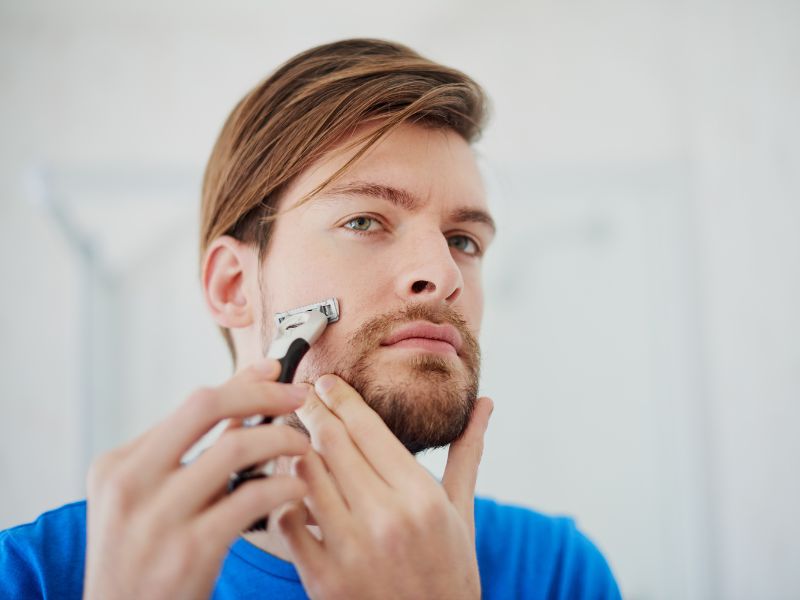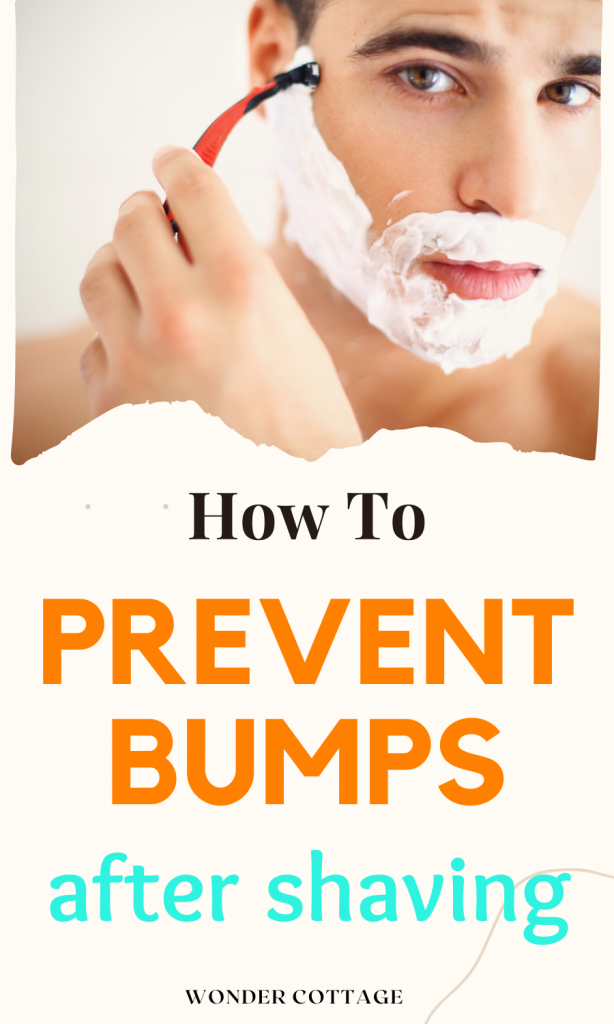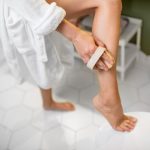Shaving has long been a ritual of grooming and self-care, offering not just aesthetic benefits but also a sense of satisfaction and confidence. Whether it’s the smooth sensation of bare skin under the arms for sleeveless attire, the clean-shaven look of the bikini area for beach days, or the crispness of a freshly shaved beard, each instance brings about a feeling of rejuvenation and pride in one’s appearance.
However, amidst the joy of achieving smooth skin, the appearance of unsightly bumps can quickly dampen spirits. These bumps, often caused by irritation and ingrown hairs, serve as reminders of the discomfort that can accompany the shaving process. Ingrown hairs occur when hair curls back into the skin instead of growing outward, leading to inflammation, redness, and sometimes even infection.
The frustration of dealing with these bumps can overshadow the initial satisfaction of a smooth shave. The discomfort they bring can range from mild irritation to significant discomfort, affecting not only physical comfort but also mental well-being. Suddenly, the act of shaving, which was meant to enhance one’s appearance and confidence, becomes a source of frustration and self-consciousness.
Despite these challenges, many individuals continue to shave, seeking the smoothness and cleanliness it offers. To mitigate the risk of bumps and irritation, proper shaving techniques, such as using sharp razors, moisturizing the skin, and exfoliating regularly, are essential. Additionally, alternative hair removal methods like waxing or laser treatments may offer longer-lasting results with fewer side effects.
Ultimately, while shaving may come with its challenges, the allure of smooth, bare skin remains a powerful motivator, prompting many to persevere in their grooming routines despite the occasional bumps along the way.

Bumps, medically known as pseudofolliculitis barbae or razor bumps, are common skin conditions characterized by inflammation around hair follicles, often occurring after shaving. While they are more prevalent in men and commonly affect the face, they can also occur in areas like the armpits, private parts, and legs. Symptoms typically include small red or dark bumps that may be inflamed and painful, resembling pimples with pus-filled heads.
Razor bumps can be self-diagnosed and tend to resolve on their own within two to three weeks, although they may recur with each shave. However, frequent shaving-related irritation can lead to scarring, particularly if the bumps are manipulated or forcefully popped.
Individuals with curly hair, particularly African American and Hispanic men, are more prone to developing razor bumps. Statistics indicate that between 45-85% of African American males experience various skin conditions, making them more susceptible to this issue.
The presence of razor bumps can significantly impact one’s confidence, especially if shaving is intended to achieve smooth, soft skin. Fortunately, there are ways to prevent razor bumps after shaving:

How to prevent bumps after shaving
Exfoliate
Exfoliating eliminates dead skin cells from the body, so do it before shaving to get rid of all the dead skin cells and toxins. This will give the razor a nice and clean area to work on when removing hair from your skin. Exfoliating after shaving is not recommended since your skin becomes extremely sensitive and you may experience cuts. It is therefore advisable to exfoliate before shaving.
Before shaving, exfoliating removes excess oil, dirt, and dead skin cells. It keeps the skin clean, unclogs the pores, and helps achieve a closer shave.
If you want to exfoliate after shaving, you should do so, a few days after shaving. After shaving, exfoliating can also remove dead skin and make it easier for the hair to grow thus making it less likely to get ingrown hairs.
Use heat
Applying heat to the skin before shaving can help open up pores, facilitating smoother hair removal. Heat causes pores to dilate, making it easier to pull out hair during shaving. Simple methods like pouring warm water over the area or using a warm, damp towel or washcloth can effectively apply heat.
By soaking the towel or washcloth in warm water and placing it on the skin for a few minutes, the heat penetrates the skin, softening the hair and making it more pliable. This pre-shave preparation step can enhance the shaving experience, reducing the likelihood of irritation and razor bumps while promoting a closer, more comfortable shave.

Use a clean razor
We all have a habit of using and reusing razors. If you’re going to repurpose an old razor, make sure it’s clean. Dirt and bacteria can become trapped in old razors. When put on the skin, this will irritate the skin. Make sure the blade isn’t dull as well. Because if it is, it will be unable to shave the region adequately, resulting in ingrown hair.
Also, avoid shaving closely. Shave in the direction of the hair growth rather than ‘against the grain’ and avoid pulling your skin when shaving.
Using an electric razor can prevent shaving bumps too, but if you don’t use an electric razor, then try to replace your razors as frequently as you can.
Use shaving cream
Shaving cream plays a crucial role in the shaving process by hydrating the skin and forming a protective barrier, which reduces friction. This protective layer minimizes the risk of redness, razor burn, and other skin irritations commonly associated with shaving.
Additionally, the moisturizing properties of shaving cream help soften and nourish hair follicles, making them more pliable and easier to shave. By facilitating smoother hair removal, shaving cream also helps prevent the occurrence of ingrown hairs, where hair curls back into the skin. Overall, incorporating shaving cream into your shaving routine not only enhances comfort but also promotes healthier, smoother skin post-shave.
Related Posts
Care for razor blade
- Using a single-edge razor blade is better than a double-edge blade because a double-edge blade cuts the hair deeper point which is likely to cause ingrown hairs.
- Clean the razor blade after each stroke.
- Avoid using razor blades so many times as this can cause bacteria to get to your pores and cause an infection.
- Rinse your blade with water and use alcohol-based cleaner to clean shaved area.
- Keeping your facial hair moist and lubricated with shaving cream and water prevents dry brittle hair thus allowing you to shave with a single stroke to prevent bumps.

How to get rid of razor bumps
- Razor bumps can be treated with prescribed antibacterial lotions and applying over-the-counter low concentration hydrocortisone creams.
2. You can also try some at-home remedies to get rid of razor bumps. These include; putting warm green tea bags on the bumps to compress them. You can also use aloe vera and tea tree oil
- Tea tree oil has antibacterial, anti-inflammatory, and antiseptic properties. Mix less than 15 drops of tea tree oil into a bowl of warm water, soak your face towel into the mixture and apply the face towel on affected areas for 20-30 minutes a day. Tea tree opens up the pores, loosens the ingrown hairs, and soothes the inflamed razor bumps.
- Aloe Vera has antibacterial and anti-inflammatory effects. It can be used as a moisturizer and a soothing cream. Cut open a fresh aloe vera leaf and scoop the gel from it. Spread it on the affected area, leave it dry for 30 minutes and wash with warm water. The natural chemicals in aloe vera quicken the healing process.
Though shaving makes you confident and presentable, bumps can be painful and give you scars. If you are unable to self-treat bumps due to shaving, laser hair removal can be the best option and lasts longer than shaving, and reduces the chance of ingrown hair.






